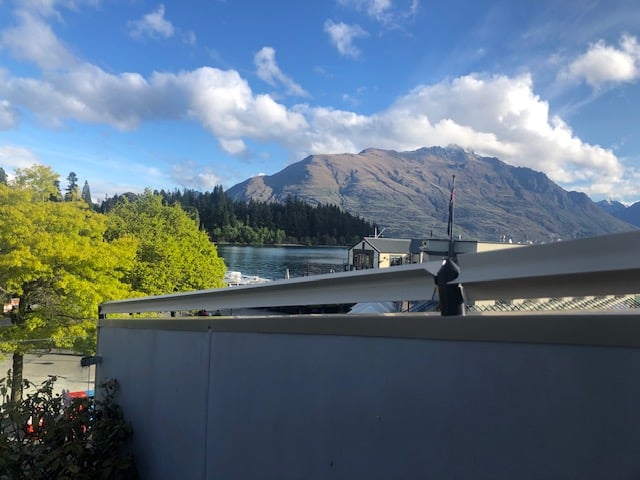CATFENCE is the exclusive New Zealand distributor of the OSCILLOT® system.


Fence requirements
Before purchasing the Oscillot® cat fence system, it’s important to check that your fences meet the requirements shown on this page.
If you’re building a new fence, we have tips to help you select a fence that will be easy to cat-proof.
What about gates? We’ve got that covered too!
Please check that your fences meet the following requirements:
- At least 1.8m high (If not, you may be able to increase the height slightly using timber, metal or acrylic sheet. See our photos page for examples)
- In good condition (Oscillot needs a solid and stable platform to ensure that the paddles spin freely if your cat attempts to climb over)
- Continuous (no gaps) for the entire perimeter of the area where you cat will roam
- No openings in the fence, or gaps under the fence, large enough for your cat to escape
Please check that your cat cannot jump over the fence
- Are there trees that your cat could climb to get over the fence? You may need to prune trees, or band them with aluminium to prevent climbing.
- Are there overhanging roofs, trellises or other objects that provide an alternative route over the fence? Be sure to consider any temporary objects such as barbecues or vehicles parked near the fence.

A catio perhaps?
If your fence doesn’t meet these requirements, and cannot be upgraded easily, why not consider fencing just a portion of your property and installing Oscillot to create a cat courtyard. Often this can be done using an existing deck or patio.
Building a fence?
Most fences in New Zealand are made of timber, but they come in a huge variety of styles.
Although Oscillot can be installed on just about any type of fence, here are some things to consider if you’re building a new fence with cat containment in mind. Following this advice will make your Oscillot installation simpler and cheaper.
1. Make it strong
The fence should not move when you lean on it. Fence posts should be set in concrete.
Reason: Movement of the fence can prevent Oscillot from spinning freely when your cat touches it.
If your fence looks like this, it’s time for a new one!


2. Make it at least 1.8m (6ft) high
Reason: When a cat attempts to escape over a fence, it starts by jumping. It then grabs onto the fence and climbs to the top. Oscillot is designed to work when your cat is climbing. If your cat can simply jump over the fence, there is probably no system that will contain them!
If you have a Bengal cat or other good jumper, make it 2.1m or more.
Already have a fence that’s too short? It may be possible to raise the height of your fence using timber, lattice, or even clear/tinted acrylic.
3. Avoid board-on-board style fences
Sometimes called “Shadow Box” or “Good Neighbour” fences, these use palings on both sides of the fence in an alternating pattern.
Nice to look at, but unfortunately your cat can probably walk right “through” the fence!


4. Avoid planter boxes against the fence
Reason: They reduce the effective height of the fence and make it easier for your cat to simply jump over.
If you still want planter boxes, then make sure the fence is at least 1.8m higher than the planter box.
Already have a planter box that cannot be moved? It may be possible to raise the height of your fence using timber, lattice, or even clear/tinted acrylic.
5. Avoid unnecessary changes in height
Reason: Oscillot goes at the top of your fence, so changes in height mean potential escape gaps between paddles at different levels, and may require some additional cat-proofing.
If you live on a sloping section, changes in height may be unavoidable and there are ways to deal with that issue.


6. Curved fences will cost more
Reason: Every time the fence changes direction, it is necessary to cut an Oscillot paddle and insert one, or perhaps two, additional dual knuckle posts, adding to the cost and complexity of your Oscillot system.
Also, is your straight fence actually straight? If you climb a few steps up a ladder and look along the top of it, you may be very surprised!
Already have a crooked fence? It’s worth trying to make it straight before adding Oscillot. Remember, every zig or zag in the fence will increase the cost.
7. Include a cap or batten along the top
Reason: Oscillot needs to be attached to a strong and stable base, to ensure that fence movement does not impede the spinning of the paddles. We do not recommend simply attaching the dual knuckle posts to fence palings.
Already have a fence with no top rail? It is usually not too difficult or expensive to add a top rail or batten (see example). Be sure to use H3.2 fence timber.


8. Avoid short rails between posts
Reason: Fences built in panels may have only short rails between posts. These rails are more likely to twist and separate from the posts than longer rails that span several posts.
Already have this type of fence? Depending on how sturdy the fence is, you may be able to attach Oscillot to the existing rails, or add a continuous rail above, or in front of, the existing short rails.
9. Avoid rails on the sides of posts
(Or horizontal palings attached directly to the posts)
Reason: This type of fence post practically invites your cat to climb over it. If your cat can go up the post and stand on top of it, it can probably jump right over the fence – no matter what you put on top of the fence.
Already have a fence of this type? You may need to add a top rail, or sheath the post tops in aluminium to prevent climbing. We recommend using 0.5mm thick aluminium sheet, 600mm high (available from hardware stores).


10. Avoid lattice
Lattice (also called trellis) is easy to climb and breaks easily, especially if trees grow through it.
Although Oscillot should prevent a cat climbing past the lattice, a solid fence is a better option.
If you must use lattice, make sure it is solidly framed with substantial timber.
Gates
There are two main styles of gates and Oscillot will work with either style. An unframed gate has nothing above it (Oscillot attaches to the gate), while a framed gate fits below the top rail of a tall fence (Oscillot simply continues along the top rail, unaffected by the gate).

A framed gate generally requires less cutting of Oscillot paddles and will require fewer dual knuckle posts.
If you are planning to face-mount your Oscillot system on an unframed gate, pay special attention to the orientation and location of the gate. You need to ensure that the Oscillot paddle on the gate will not collide with a paddle on the fence when you open the gate. It is usually easiest if the gate opens outward.
If the gate must open inward, don’t put the gate in a corner. Even moving it 100mm from the corner will be enough to allow the gate to open. In some situations you may need to mount the paddle on the gate at a slightly different height than the paddle on the fence so that they do not strike each other when you open the gate.
Tip: Before attaching the dual knuckle posts to any unframed gate (inward or outward opening), hold them in position while you open and close the gate to make sure they will not hit the gate posts.

More information about NZ fence laws
See the Consumer NZ website to learn about the Fencing Act, and get suggestions on how you can work with your neighbours when a fence needs to be replaced or upgraded.
